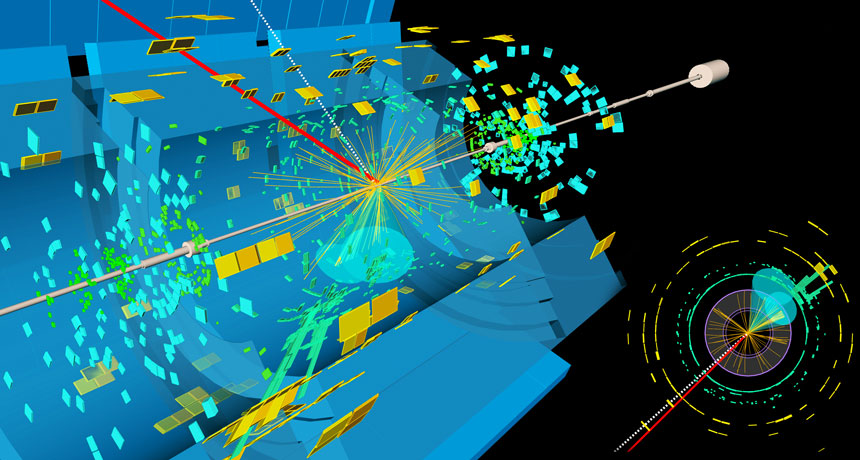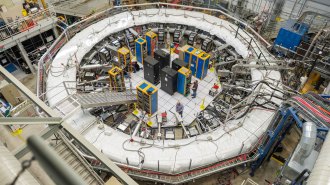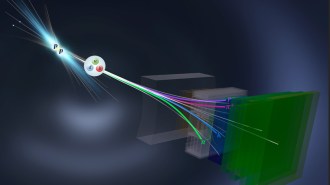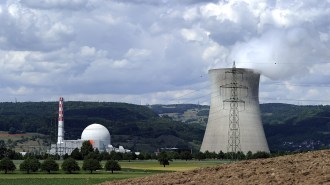An elusive Higgs boson decay has finally been spotted
For the first time, the elementary particle has been seen producing two bottom quarks

BOTTOM LINE Two experiments at the Large Hadron Collider have discovered evidence for the Higgs boson decaying into two bottom quarks (represented by the blue cones in these visualizations of data from one such event recorded from the ATLAS detector).
ATLAS/CERN







